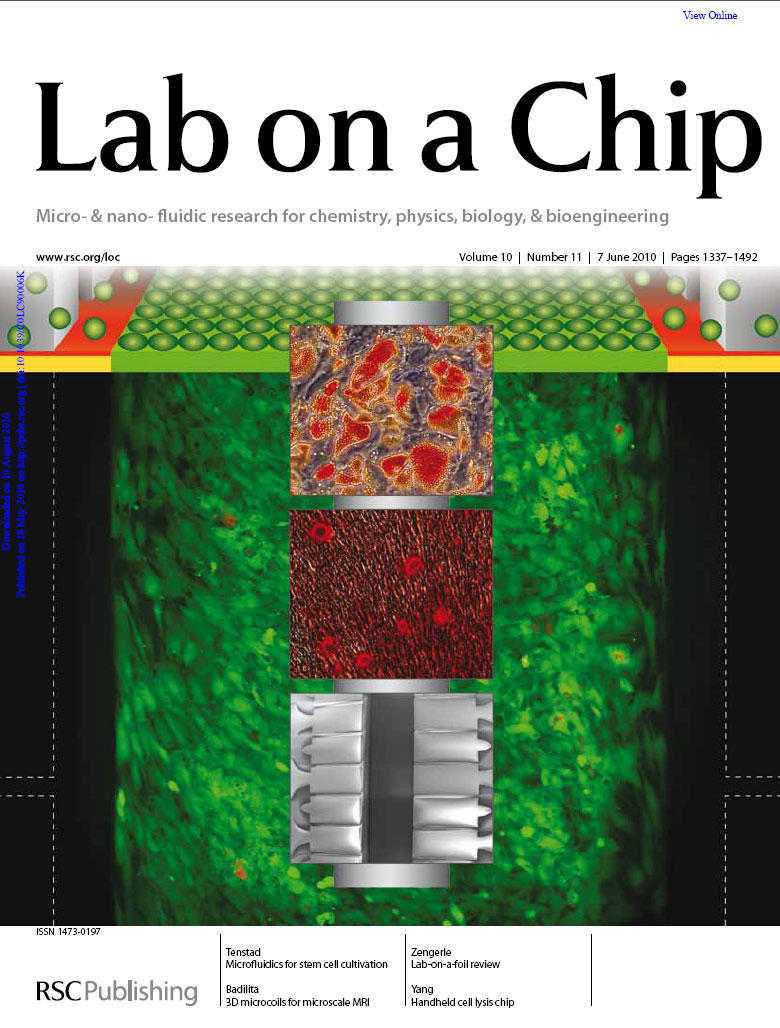Figure from Myklebost group article on cover of "Lab on a chip" journal

A figure from the article entitled "Extensive adipogenic and osteogenic differentiation of patterned human mesenchymal stem cells in a microfluidic device" was chosen as the cover illustration for a recent issue of the prestigious journal "Lab on a chip" (impact factor 6.5). The paper has been highly accessed, and is currently among the ten most accessed "Lab on a Chip" articles on the web.
As part of the effort to characterise candidate oncogenes and the involvement of stem cell functions in mesenchymal tumours (sarcomas), the Myklebost group has established an immortalised human mesenchymal stem cell model. The model is based on normal mesenchymal "stem" cells from bone marrow, provided by the Stem Cell Laboratory of Gunnar Kvalheim and colleagues at Montebello, and the work was supported by a grant to Paul Noordhuis from the NFR Stem Cell Program, who did the retroviral transductions together with Guttorm Haraldsen and colleagues at Gaustad.
Besides their use in the Myklebost group for studies of mesenchymal biology and oncogenesis, the cells have been distributed to a number of groups internationally, and are in use both in cancer biology and regenerative medicine. 
The study in lab on a Chip was a result of a collaboration between the Rian group at the Department of immunology and Myklebost, of characterising the interactions between this model of mesenchymal bone marrow stroma and leukemic stem-like cells, some of which are dependent on such cells to survive.
Ellen Tenstad and colleagues at Vestfold University College in Tønsberg are developing microfluidic devices that can simulate the 3D structure of bone marrow trabeculae, and thus provide a much improved model for cellular interactions in the bone marrow. After this initial study of the maintenance, or actually improved activity of the cells when grown in this format, a tissue model can be produced by subsequently infusing e.g. hematopoietic cells that can grow in the stroma niches generated.
Mesenchymal niches and signalling between such cells and cancer cells has also been described, and e.g. appears to be critical in programming breast cancer cells to become metastatic, so this application has numerous possibilites.
Edith Rian has left the Institute and now is Laboratory head at the Norwegian Biotech company Diagenic.
Links:
Extensive adipogenic and osteogenic differentiation of patterned human mesenchymal stem cells in a microfluidic device.
Tenstad E, Tourovskaia A, Folch A, Myklebost O, Rian E.
Lab Chip. 2010
List of ten most accessed articles Lab on a Chip articles on the web
Home page of Ola Myklebost's group: Molecular characterization of mesenchymal cancer development
Ola Myklebost's CV and publication list
